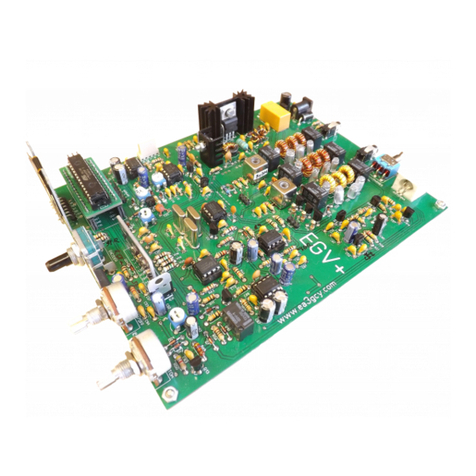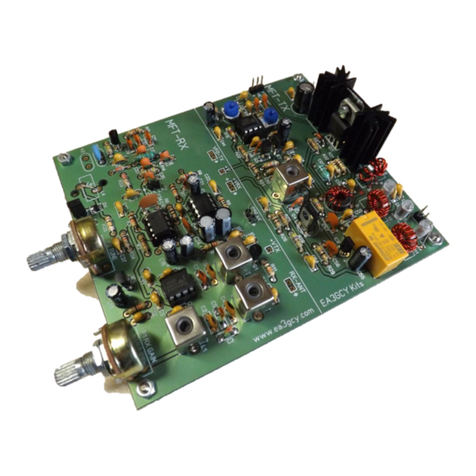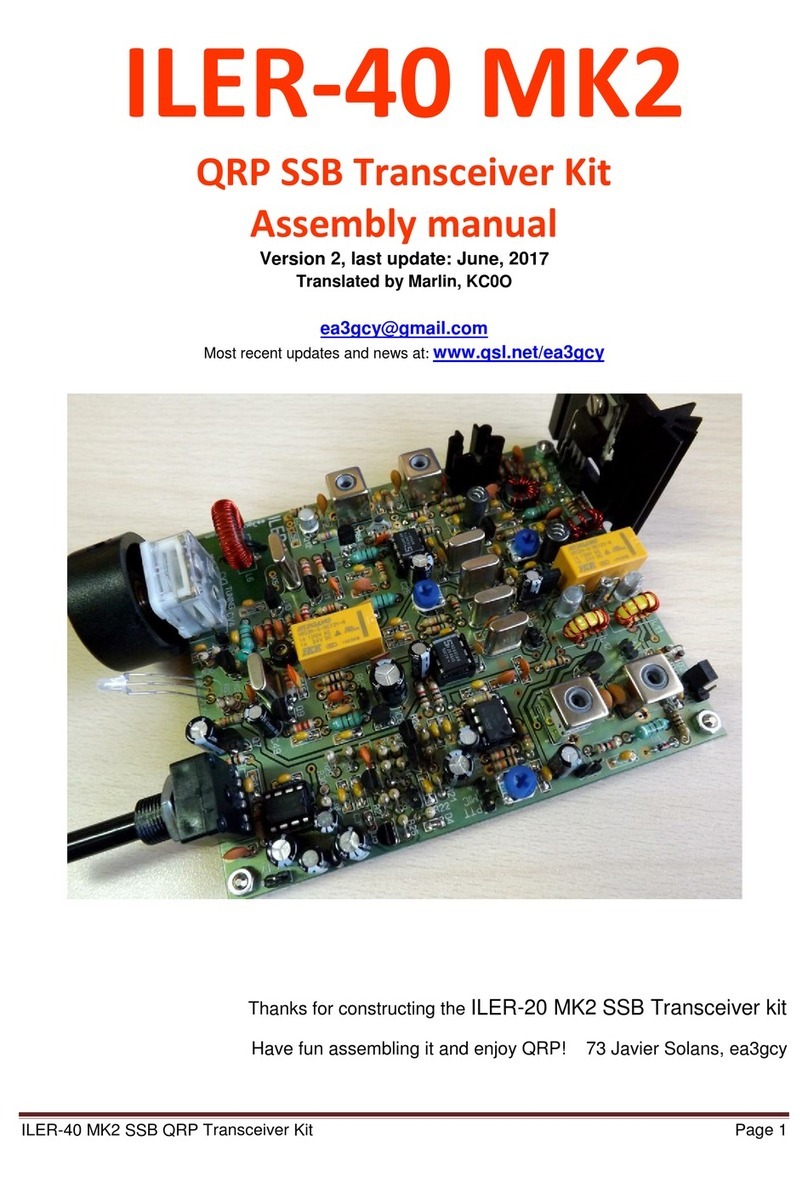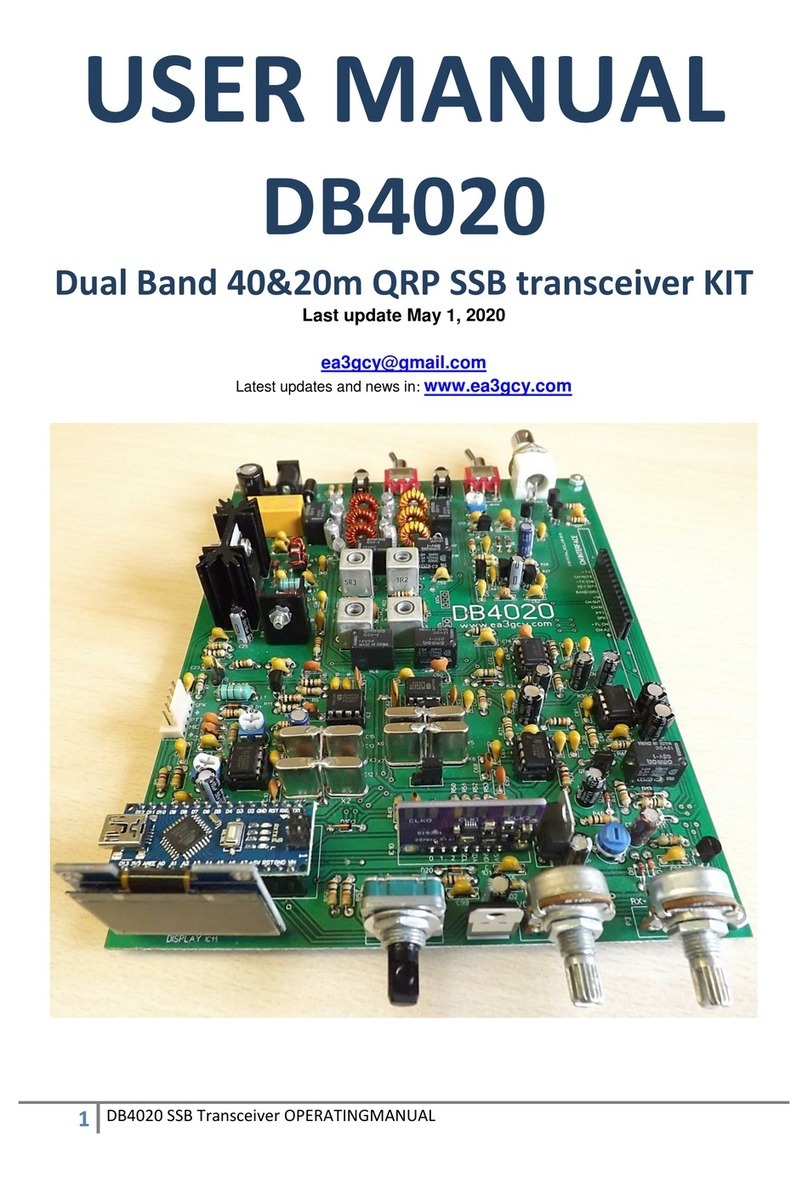EGV-40 CW QRP Transceiver Page 3
INTRODUCTION
This EGV-40 transceiver is probably the kit that I have produced with more care and illusion in my life.
It is a great honor to name this kit "EGV", the callsign suffix of the late Miguel Montilla, EA3EGV (SK).
With no doubt, this is the kind of kit he liked most.
It was my privilege to establish and share with him the first years of the EA-QRP Club. He has always
been a referent in my life; when I remember those wonderful years his humbleness, work capacity and
generosity are the virtues which shine his image.
How lucky I was to be able to share the path with you, Miguel! Thanks!
Javier Solans, ea3gcy
Miguel Montilla, EA3EGV (SK)
Miguel got his A class callsign in 1983. He hold previously the call EC3BAY. He was a good CW
operator, highly respected among their peers. Holder of many awards and winner of several contests,
Miguel enjoyed both the competition and sharing his time with a novel operator, patiently providing
information to make a QSO.
He published articles on the journal from URE (Spanish Radio Amateur Union) Unión de
Radioaficionados Españoles, on “CQ Radio Amateur” (Spanish edition) and on the G-QRP bulletins, etc.
But, without doubt, what he liked most it was QRP kit building. He loved to build a kit over a weekend
and enjoy some placid QSOs made with his new fresh transceiver. Of course, always with the minimum
power required!
Miguel EA3EGV was the founder member #1 of the EA-QRP CLUB.
On September 1994 a group of four hams, Miguel Montilla EA3EGV, Miguel Molina EA3FHC, Vicenç
Llario EA3ADV and myself, Javier Solans EA3GCY, founded the EA-QRP.
Every April the club celebrates a CW contest: “EA-QRP-CW In memoriam EA3EGV”.
EGV-40
The EGV-40 is not a novel design.
The EGV-40 kit is a low power, CW transceiver designed to be simple and compact, using the legendary
NE/SA602 mixer chips. The circuit is a “tutti frutti” mix of several well known designs from the last 20-25
years, very similar among them. In the EGV-40 I have tried to gather the best ideas of all these little
jewels but keeping in mind the philosophy of making an easy to build, compact, reasonably cheap circuit
with good characteristics.
The EGV is not a technical marvel but... will something so simple work well?
Build it, and you will be able to answer this question.
A high stability VXO covers around 40 kHz in the lower part of the band with very low drift: less than 200
Hz in the first 5 minutes of the start-up. A "fine" tuning has been added, so no mechanical or electrical
band-spread of the main tuning is required.
Also, a variable attenuator has been included in the RX path to avoid the overload with the typical strong
signals in the band.

































